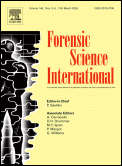

 |
 |
Under Severe Alcoholisation: Pathophysiologic and Forensic Considerations |

Citation:
Padosch SA, Schmidt PH, Kröner LU and Madea B; Death due to positional asphyxia
under severe alcoholisation: pathophysiologic and forensic considerations.
Forensic Sci Int, 20 April 2005, 149(1); pgs 67-73.
CHAS NOTE:
Since this article is unrelated to "restraint asphyxia," I elected NOT to pay $30 to get it. However, I'm posting the abstract here for anyone who needs it. If YOU want to pay for the full article, go to its
Forensic Science International Abstract Page,
And click on either the Full Text or PDF link, offered at the right of the abstract.
If someone purchases the PDF version, plz Email it to me and save others the money! I'll post the PDF file and put a link to it here. [I won't mess with the "Full Text" version, because I'd have to html-code it to post it.]
THANX, CHAS

Forensic Science International
Volume 149, Issue 1 , 20 April 2005, Pages 67-73
Death Due to Positional Asphyxia Under Severe Alcoholisation: Pathophysiologic and Forensic Considerations(*1)
Stephan A. Padosch, Peter H. Schmidt, Lars U. Kröner(1) and Burkhard Madea
Department of Legal Medicine, University of Bonn, Stiftsplatz 12, D-53111, Bonn, Germany
Received 24 November 2003; accepted 24 May 2004. Available online 23 August 2004.

Abstract
In contrary to "physical restraint", describing a fixed body position due to external devices, "positional restraint" is defined as an abnormal body position, resulting from accidental fixation under unfortunate circumstances. We report on a remarkable case of positional asphyxia of an alcoholised young man after a fall down a staircase. On external examination, the body showed petechiae of the conjunctivae and oral mucosa, abrasions on the left zygomatic region and scratch marks, respectively. Neither broken fingernails, etc. nor signs of external violence against the neck were found. Autopsy revealed haemorrhages in the praevertebral cervical musculature and Simon's sign. Haemorrhagic pulmonary edema and cerebral edema were observed; blood alcohol concentration: 2.60 g/l, urine alcohol concentration: 3.26 g/l. As cause of death, positional asphyxia after blunt head trauma has to be considered as well as lethal ethanol intoxication. To us, alcoholisation attributed to the fall and together with unconsciousness following blunt head trauma circumvented self-rescue efforts, and therefore, aggravated the potentially lethal impact of positional restraint.
Author Keywords: Positional restraint; Asphyxia; Blunt head trauma; Ethanol intoxication; Synergistic pathophysiologic mechanisms; Cause of death

(*1) Presented at the 82nd Annual Meeting of the German Society of Legal Medicine (DGRM), Münster, September 2003.
(1) Present address: Department of Legal Medicine, University of Cologne, Melatengürtel 60-62, D-50823 Cologne, Germany.
Corresponding author, Stephan A. Padosch.
Tel.: +49 228 73 83 10; fax: +49 228 73 83 39.
 stephan.padosch@ukb.uni-bonn.de
stephan.padosch@ukb.uni-bonn.de


 Email Charly at: c-d-miller@neb.rr.com
Email Charly at: c-d-miller@neb.rr.com